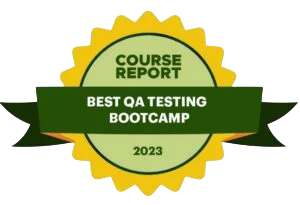
First thing is first – What is database testing? Mainly, it involves creating SQL queries to validate the database operations and structures. The process includes anything from validating the schema to testing CRUD operations. At the end of the day, the goal is to ensure the database functions and all the data is reliable.
To become a database tester, one needs to understand the structure of a database. For example, a tester might test the application UI to determine whether it returns the correct data after the operation. But how can you do that if you don’t grasp the fundamental concepts? That is where platforms like us at Test Pro come in handy, as they provide their students with online courses and bootcamps.
There are different types of testing when it comes to databases:
Okay, but how do you actually create and run a test? As with other tech fields like quality assurance, these tests can be manual or automated. That means you can either run queries manually to validate assumptions (manual) or test the application UI (automated). Automating tests is more efficient and gets the job done quicker, and being proficient at it can give you an advantage over other testers.
SQL test is one of the most popular ways to test databases. This tool allows anyone to write unit tests for SQL server databases. Unit testing focuses on verifying individual components of particular software applications (the smallest testable parts of a program, such as functions). It answers questions like: Do these small parts function correctly, execute fast, are automated and scalable, etcetera?
Other popular database testing tools include:
Now, what are some of the most popular database testing interview questions? What must you be familiar with before entering a job interview room? Well, here are some key concepts a database tester must master:
And more. Of course, one can never guess the questions of an interview. But the more you prepare for these inconveniences, the higher your chances of nailing the interview. If you want to build a career in tech and software testing, make sure to check Test Pro’s courses.

Test Pro is an innovative platform that provides an opportunity to learn in the field of testing for any category of people regardless of age, article, level of knowledge or nationality, where diligence and dedication to the field of testing is valued. We offer exciting and useful courses thanks to which you can focus on real projects in real life, and you can also acquire the skills and knowledge that you will definitely need in the future as a tester.
There are no limits to excellence in Test Pro, so don’t miss your chance to improve your testing potential. So, hurry up to visit our official website, register for our free webinar and open new doors to a more successful future. There will be a perfect place for you on our boat, what do you say, are you with us?
Database testing involves creating SQL queries to validate the database operations and structures. Mainly, it’s about ensuring the database returns the correct data, runs smoothly, and is secure.
SQL Test is a tool with pre-written SQL tests to make testing easier. It helps individuals write and run unit tests for SQL server databases.
One can test databases either manually or automatically. The latter saves time and resources for the company, and thus aspiring testers must become proficient at automating tests that run efficiently. The market is flooded with options to make the job easier, like SQL Test.
As the name suggests, this software testing focuses on verifying individual components of particular software applications (the smallest testable parts of a program, such as functions).

With the constant advance of technology, it can be a little overwhelming at times to know which practices and systems work. However, you don’t have to worry: Understanding the difference between DevOps and QA is much easier than it seems. This is precisely why today we’ll be explaining why these methodologies are complementary and can work together to great effect.

A maximum for success in any chosen career, is that what gets measured, can be managed, and one of the most vital tools for measurement of your understanding of any field, is access to up-to-date education. The technology sector is a highly innovative and competitive space, and tooling yourself with the right learning to succeed in this exciting and evolving sphere, is essential. Test Pro is the ultimate educator for anyone wanting to work in software production as a senior QA analyst, or in any other dynamic QA inspired role, such as a senior software tester, full stack testers, or senior QA tester.

Are you ready to change course and enter the dynamic world of software development, but lack any coding skills or prior training? TestPro has designed a range of bespoke educational pathways that cater to those with a passion to extend their learning, elevate their earning power, and boost their career credentials in software engineering. If you’ve got an interest in both front end and server-side technologies and software development, TestPro’s customized and condensed Full stack developer course, could be the program for you. This full stack developer bootcamp is specifically geared towards IT newbies wanting to launch into software development. It teaches a rounded skillset that provides maximal pay scope and enhanced job possibilities. Prepare to align yourself with some of the highest-paying career progressive roles in the tech industry by fulfilling full stack developer education requirements with TestPro’s unique online bootcamp.